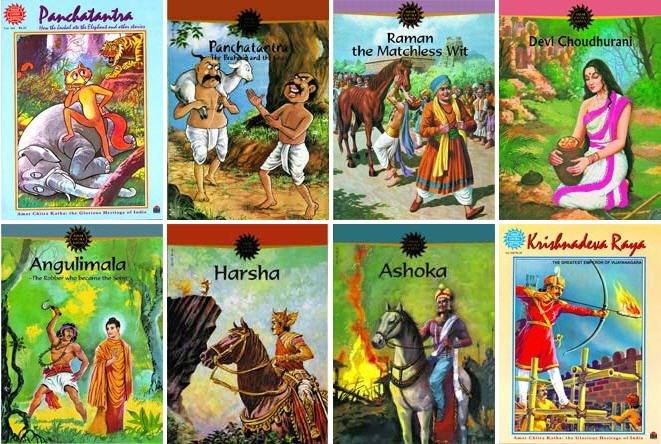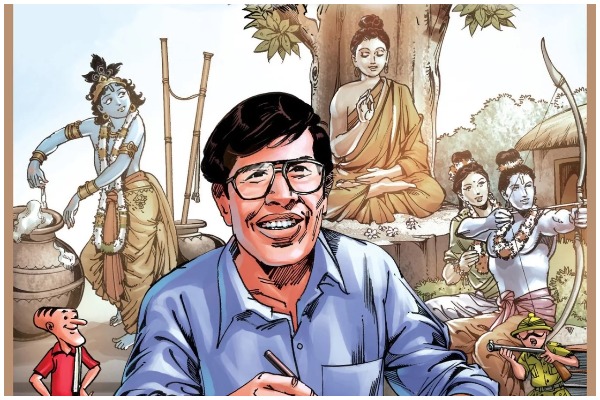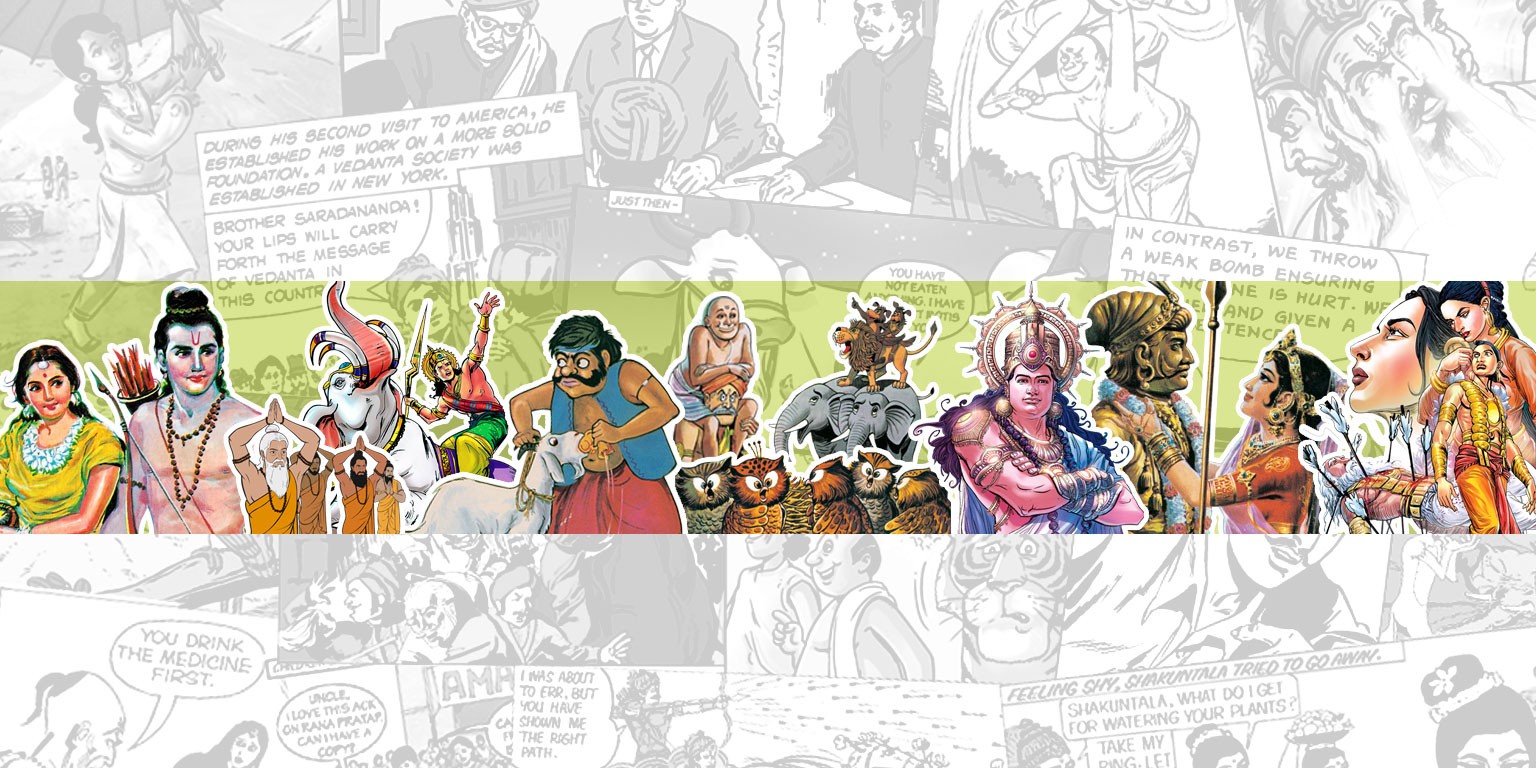
I love comics. They are a healthy mix of two good
things of life: pictures and stories. Moreover , they are crisp and short. You
can take them in a train journey, to a friend's place and even smuggle
them in a schoolbag. As a child I had a privilege of having two very sensible
elder sisters who treasured their comics like jewels and later, passed on the
legacy to me- the youngest of the trio. I can recall those happy days like it
was yesterday, when I will spent entire hot afternoon of Indian summer, deeply
engrossed in the stories of kings and queens, Puranas and Jatakas,
folk tales, stories of thieves and pirates, Panchtantra and occasionally
Phantom, Mandrake too. Oh ! those blissful days.
My sisters used to ‘issue’ me comics for a limited
time with all kinds of instructions of not folding them , no dog ears and no
reading while eating . (At times I violated the last one when they were not
around). Each comic was had a specific place in a particular stack according to
its subject and of course ownership, (divided between my sisters). We were very
proud of our collection of about 400 comics which was considerably more than
that of any friend …and extreme care was taken to increase this collection at
any possible opportunity viz visit of an uncle/aunt, birthdays, gain of some
pocket money etc. Though we used to read all kinds of comics, our parents
specially encouraged us to read Amar Chitra Katha. As a child I was not aware
of the logic behind this preference but later in life, I really thanked them
for being so careful of what their kids were reading. Today, I do not miss
Tintin or Asterix, Phantom or Flash Gordon as much as I miss my days with
various titles of Amar Chitra Katha. These storybooks were a real treat for a
young person in my situation.

I gratefully acknowledge the role of Amar Chitra
Katha in forming my opinions on a variety of subjects. It was through them that
I was introduced to most of the Sanskrit classics, folk tales of various
regions, myths and historical characters. I still have that collection intact
at my parent’s house and I refuse to part with it unless I find some worthy
inheritor. In fact when my niece was growing up I used to take out these comics
for her during her vacations and never missed to refresh my memory with another
read. I am sure the same fondness is shared by many in my generation.
The amazing story of Amar Chitra Katha started in
1967-68 when an attempt to translate the myriad tales from Indian history and
culture into comics was made to cover a wide spectrum of titles. It was the
creative genius and foresight of the legendary editor, Anant Pai and the
entrepreneurial zeal and courage of the publisher G.L. Mirchandani, Chairman of
India Book House that give birth to a brand which delighted generations of children(and
their parents) since then.

It is said that one day as he was watching a quiz
programme on television; Anant Pai saw that the participating children from
English-medium schools were well versed with the lore of Tarzan and the
exploits of Greek gods but could not answer simple questions about the
Ramayana. That is when he decided to use the popular medium of comics to
acquaint Indian children with their rich cultural heritage. And god bless that
decision! I passed many history exams in my childhood thanks to Amar Chitra
Katha. I still remember that as a student of class 3, I was the only one who
could give the entire list of Mughal kings in a school quiz. That was easy, for
I had read about all those emperors in Amar Chitra Katha and my disciplined
sisters used to keep the comics on historical characters in the strict order of
history.
Through the medium of comics, Amar Chitra Katha
brought to life the colourful mythologies and legends of India. The Route to your Roots was
the catch phrase coined to describe the efforts of Amar Chitra Katha to tell
tales of heroes and heroines from Indian mythology, history and folklore.

These comics enriched my storehouse of stories
manifold. I still feel that my knowledge of folk tales, tales from Buddhist
Jatakas, Jainism, Panchtantra, classics of various Indian languages and Hindu
myths is much more than most others. All thanks to Amar Chitra Katha which made
me associate each story with beautiful illustrations and well chosen dialogues.
Later in life when I read the original stories/books , the images from comics
were still in my mind. Best part about these comics was their factual correctness.
According to the strict editorial policy, each
detail had to be culled from a reputed reference and had to be available for
any query, because Amar Chitra Katha, by the 1980s was taken as an authentic
secondary source of information. I feel sad that Anant Pai’s contribution in
heralding this cultural information revolution still lacks proper
acknowledgement in terms of civilian honours like Padma Bhushan .
But who cared for these details as a child. For me
, they were interesting tales of princesses and kings, sadhus and reformers , a
poor orphan girl in Patliputra or a farmer in King Harsha's kingdom. And all
together, it was a world of wonder , magic and colours. Today , I feel very
happy to find AMAR CHITRA KATHA back in the bookstores after a gap. Also a good
database of the titles is available on their website . For me finding these
books on a bookshelf today , is like meeting childhood friends…. a taste
of good memories of happy days.
2 comments:
Nice to know this.
Amar Chitra Katha touches the roots of our hearts bcos we identify and relate ourselves to it in a more natural way which does not happen with phantom and Mandrake comics even though they too make interesting reading. i am sure that content wise it will still be the most popular unless it loses out on economics.
Post a Comment